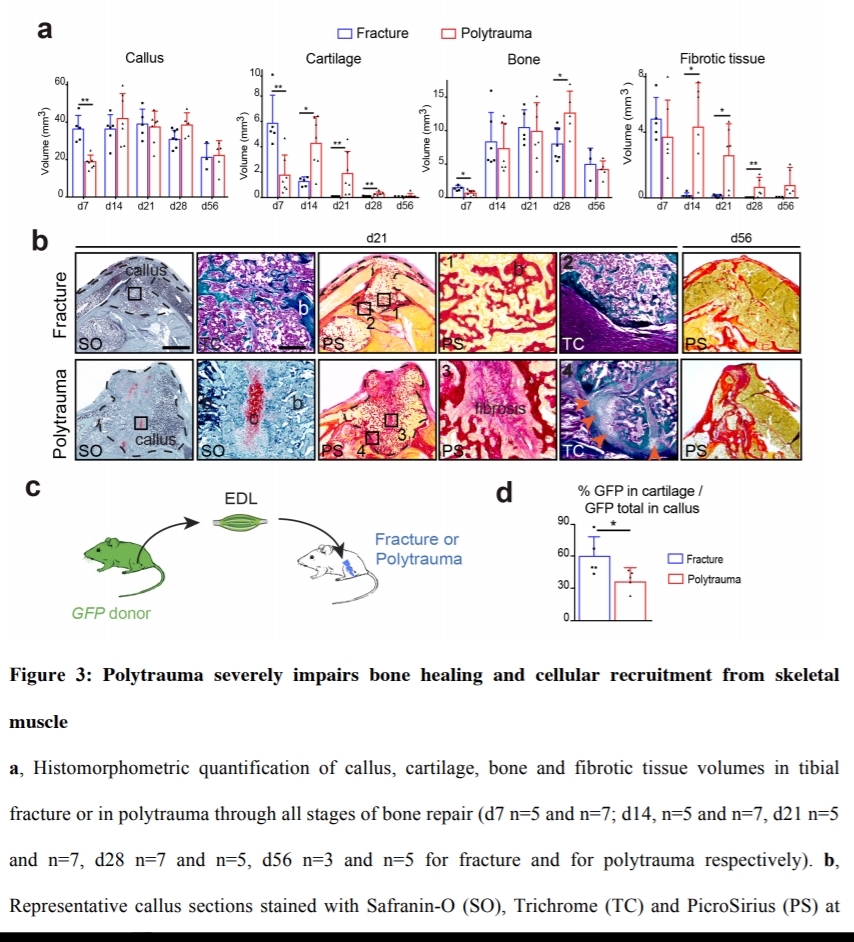Direct contribution of skeletal muscle mesenchymal progenitors to bone repair
Anais Julien, bioRxiv posted 9 September 2020
Tissue regeneration relies on the activation of tissue resident stem cells concomitant with a transient fibrous tissue deposition to allow functional tissue recovery. Bone regeneration involves skeletal stem/progenitors from periosteum and bone marrow, the formation of a fibrous callus followed by the deposition of cartilage and bone to consolidate the fracture. Here, we show that mesenchymal progenitors residing in skeletal muscle adjacent to the bone fracture play a crucial role in mediating the initial fibrotic response to bone injury and also participate in cartilage and bone formation in the fracture callus. Combined lineage and scRNAseq analyses reveal that skeletal muscle mesenchymal progenitors adopt a fibrogenic fate before they engage in a chondrogenic fate after fracture. In polytrauma, where bone and skeletal muscle are injured, skeletal muscle mesenchymal progenitors fail to undergo fibrogenesis and chondrogenesis. This leads to impaired healing and persistent callus fibrosis originating from skeletal muscle. Thus, essential bone-muscle interactions govern bone regeneration through the direct contribution of skeletal muscle as a source of mesenchymal progenitors driving the fibrotic response and fibrotic remodeling, and supporting cartilage and bone formation.














